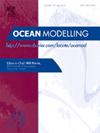由热带气旋引起的风暴潮高峰的神经网络预测
IF 2.9
3区 地球科学
Q2 METEOROLOGY & ATMOSPHERIC SCIENCES
引用次数: 0
摘要
风暴引发的洪水对沿海社区构成威胁。基于过程的模型可以预测潮汐、风和热带气旋引起的洪水的综合影响,包括实时预测,但通常由于模型的运行时间而受到限制。研究人员已经开发出神经网络(NN),通过风暴潮模拟库进行训练,可以在几秒钟内预测洪水。然而,以前的神经网络忽略了与天文潮汐的相互作用,局限于特定持续时间的风暴,并针对极端条件进行训练。在这项研究中,开发了一个神经网络来预测北卡罗莱纳州海岸9个站点的风暴潮(风暴潮和潮汐)峰值。在训练方面,通过基于过程的模型模拟1813次基于北大西洋历史数据的合成风暴,开发了一个风暴潮汐库,但特别关注北卡罗来纳州,然后通过与随机潮汐的组合增加了50倍。与以前的神经网络不同,该方法在训练中结合了天文潮汐,并使用数据增强技术来增强泛化。神经网络表现良好,均方根误差约为6厘米,极端风暴的平均偏差误差约为5厘米。对于历史风暴的概率预测,该模型可以在15秒内预测100个集合成员,并且风暴潮汐峰值的范围接近其真实值。本文章由计算机程序翻译,如有差异,请以英文原文为准。
Neural network predictions of peak storm tides due to tropical cyclones
Storm-driven flooding is a hazard for coastal communities. Process-based models can predict the combined effects of tides, winds, and flooding due to tropical cyclones, including in real-time, but often with restrictions due to a model’s runtime. Researchers have developed neural networks (NN), trained on libraries of storm surge simulations, to predict flooding in seconds. However, previous NNs ignored interactions with astronomical tides, limited to storms of specific durations, and trained for extreme conditions. In this study, a NN is developed to predict peak values for storm tides (storm surge and tides) at nine stations along the North Carolina coast. For training, a library of storm-tides was developed via process-based model simulations of 1813 synthetic storms based on historical data in the north Atlantic Ocean, but with a specific focus on North Carolina, and then augmented by a factor of 50 via combinations with random tides. Unlike previous NN, this approach incorporates the astronomical tides in the training and uses data augmentation techniques for enhanced generalization. The NN performs well, with root-mean-square errors of about 6 cm and mean bias errors for the extreme storms of about 5 cm. For probabilistic predictions of historical storms, the model can predict for 100 ensemble members in 1 s, and the ranges of peak storm tides are close to their true values.
求助全文
通过发布文献求助,成功后即可免费获取论文全文。
去求助
来源期刊

Ocean Modelling
地学-海洋学
CiteScore
5.50
自引率
9.40%
发文量
86
审稿时长
19.6 weeks
期刊介绍:
The main objective of Ocean Modelling is to provide rapid communication between those interested in ocean modelling, whether through direct observation, or through analytical, numerical or laboratory models, and including interactions between physical and biogeochemical or biological phenomena. Because of the intimate links between ocean and atmosphere, involvement of scientists interested in influences of either medium on the other is welcome. The journal has a wide scope and includes ocean-atmosphere interaction in various forms as well as pure ocean results. In addition to primary peer-reviewed papers, the journal provides review papers, preliminary communications, and discussions.
 求助内容:
求助内容: 应助结果提醒方式:
应助结果提醒方式:


